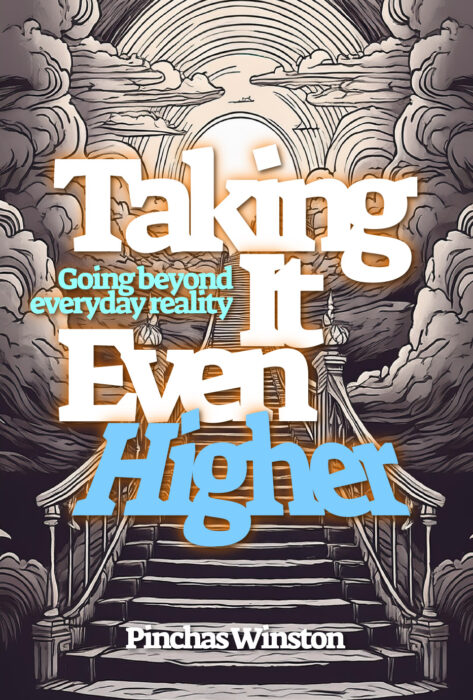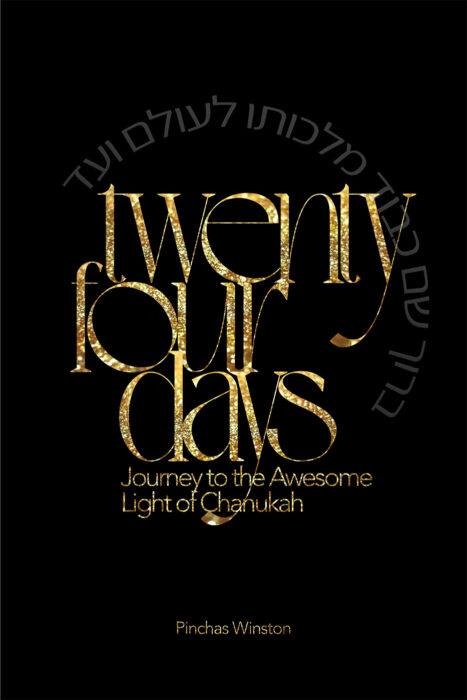Parashas Mishpatim, Issue #1032 – By Rabbi Pinchas Winston
Friday Night
One day a gentile came to Shammai and asked him how many Torahs the Jewish people have. He answered two, a written one and an oral one. He then asked to be taught only the written one, after which he would convert. He didn’t get the chance, because Shammai threw him out.
Undaunted, the gentile turned to Hillel who not only did not scold or throw him out, but he taught him. On the first day, Hillel showed him the letters of the Aleph-Bais and said to him: “Aleph, Bais, Gimmel, Dalet.” The next day he reversed the order of the letters and told him that an Aleph is a Tav and so on. The convert said to him: “But yesterday you did not tell me that.” Hillel told him: “You see that it is impossible to learn what is written without relying on an oral tradition. Didn’t you rely on me? Therefore, you should also rely on me with regard to the matter of the Oral Torah, and accept the interpretations that it contains.”
And so the gentile did, and converted with flying colors.
There are a couple of more stories like this, with the conclusion being a bunch of grateful converts who praise Hillel for having the patience to work with them. And not just work with them, but to outsmart them. When they first applied for Jewish membership, they lacked the knowledge and experience to appreciate the truth about Torah and themselves. They didn’t know that they wanted what Shammai was selling and Hillel found a way to show it to them.
My Rosh Yeshivah, Rabbi Noach Weinberg, zt”l (Aish HaTorah) may have modeled himself after Hillel. He had been inspired to re-affiliate “lost” Jews, and spent his entire adult life devoted to that program. I don’t know if he started off with a Shammai approach, which is very natural to do as an Orthodox Jew, and failed. But by the time I came around, the Hillel approach was well in progress, and succeeding beyond expectation.
One of his key selling points was that the world was made for pleasure. Rav Noach even developed a program called “The Five Levels of Pleasure,” something everyone should know, especially Orthodox Jews. God tells us in no uncertain terms that all of the horrible curses described in Parashas Ki Savo will happen if we do not serve God with joy. Too many Shomer Shabbos Jews look like they’re in pain most of the time.
In any case it worked. Most of us bought into it, believing that this was a different brand of Judaism than most of us had experienced growing up Conservative or Reform. It was alive and vibrant, and most of us were certainly having a good time growing up religious at Aish HaTorah, a LOT of fun. (Some of my fondest memories are from those days.)
It’s also been a great time in history to become a ba’al teshuvah. Parnassah is easier, and often plentiful, thank God. Kosher food is extremely available and of high quality. Chalav Yisroel is just about everywhere. And for better or worse, some of the gentile forms of entertainment have burrowed into the Torah world, in a “Jewish way” of course. It even became a fad for a short while to learn with an Orthodox rabbi during your business day.
By the time I got to the part in Derech Hashem that said this world is not the destined world of pleasure, but the World-to-Come instead, it did not matter anymore. I believed in God, knew that Torah had to be His, and didn’t mind making sacrifices for both. I had already come to understand, as Rav Noach knew we eventually would, that the greatest pleasure a person can have in this world is living according to truth, God’s truth.
We hadn’t been deceived, just outsmarted. We had been intellectually chaperoned by a brilliant and so very eloquent rabbi, until we were spiritually mature enough to know the truth and commit to it.
In any case, it wasn’t that Rav Noach was wrong, God forbid. This world is clearly very pleasurable. It turns out that the difference is that when it comes to Eisav, that pleasure is the goal of life itself. But when it comes to the Jewish people, who are destined for the eternal and unlimited pleasure of Olam HaBa, it is only meant to be a wonderful by-product of doing the Torah thing.
Shabbos Day
IT’S KIND OF the same with these parshios. Last week’s parsha was drama, and even the Ten Commandments were given with style. This week’s parsha begins with the most technical of laws, the meat-and-potatoes of most in-depth yeshivah learning. In a sense, last week’s parsha was all Hillel. This week’s parsha starts out very Shammai-like before returning towards the end of it to a Hillel-like approach.
But this itself makes the point. You can’t have only Hillel and you can’t have only Shammai. You need both of them, and the only reason why there is a Hillel is because there is a Shammai, and vice-versa. You can put bread on top and bread on the bottom. But it only becomes a sandwich once you put the “meat” between the two of them.
When I was first becoming religious, I happened to be back at the Conservative shul where I prayed on the High Holidays and went to Cheder. The back-up rabbi wanted to talk to me about what I was in the process of doing, probably to convince me out of it. When we got to the discussion about Shabbos, he asked me (as if shocked), “Do you mean to say that you believe that God would rather a little old lady stay in her apartment by herself on Shabbos, than drive and be together with her friends in shul?”
I hadn’t known tons of halachah at that time, but I knew enough to answer, “Yes, that is what God wants.” Then he answered something to the effect of, “Well, that is not a god I can worship,” and that was that.
Is that an option? Didn’t a lot of Jews think like that in Europe, or Russia, and ended up being persecuted together with the Orthodox Jews as well? Torah Jews may have suffered, but at least they did it while doing the meaningful thing, like Rebi Akiva in this story:
Once the evil [Roman] government issued a decree forbidding Jews to study and practice the Torah. Pappus bar Yehudah found Rebi Akiva publicly teaching Torah. He asked him: “Akiva, aren’t you afraid of the government?”
He replied: “I will explain to you with a parable. A fox was once walking alongside of a river, and he saw fish going in swarms from one place to another. He said to them: ‘From what are you fleeing?’ They replied: ‘From the nets cast for us by men.’ He said to them: ‘Would you like to come up on to the dry land so that you and I can live together in the way that my ancestors lived with your ancestors?’ They answered: ‘Are you the one they call the cleverest of animals? You are not clever but foolish. If we are afraid in the element in which we live, how much more in the element in which we would die!’ So it is with us. If such is our condition when we sit and study the Torah, of which it is written, ‘For that is your life and the length of your days,’ if we go and neglect it how much worse off we shall be!”
It is related that soon afterwards Rebi Akiva was arrested and thrown into prison, and Pappus bar Yehudah was also arrested and imprisoned next to him. He said to him: “Pappus, who brought you here?”
He replied: “Happy are you, Rebi Akiva, that you have been seized for busying yourself with the Torah! Too bad for Pappus who has been seized for busying himself with idle things!” (Brochos 61b)
Seudas Shlishis
I KNOW THAT was a Shammai-like story to tell. The point was not to intimidate anyone into obedience, just to make a point that has been a fact of Jewish history a lot more than ANY of us would care to admit.
There is another point here as well. The story is backwards without a belief in the World-to-Come. If we’re not going anywhere after death, then Pappus could have argued just the opposite: “Too bad Rebi Akiva for you. At least I got arrested having a good time. You got arrested for doing some meaningless spiritual thing!”
But this was not a gloating Pappus. It was an envious Pappus. “We’re both going to die,” Pappus told Rebi Akiva. “But your reason for dying makes you a martyr, and it will elevate you close to God in the World-to-Come. My death is not even close in meaning and merit. And I’m not even going to have a second chance to correct that! You don’t even need one.”
Why not? How did Rebi Akiva, the quintessential ba’al teshuvah, get it right when he needed to the most? That was the answer he gave to his students who questioned his devotion at such a difficult moment. He told them, “I have prepared for this moment all of my religious life, like the Shema tells us.”
The truth is, Rebi Akiva actually died on the last intended day of his life. He was 120 years old, probably to the day or close to it. He didn’t die prematurely, he just didn’t die peacefully, as the angels complained. And we all know that the final moments of an experience can wipe away all the good that occurred before it if they are tragic.
Again, if this world is where it is at, that was a terrible way to go. But it is not, and therefore, it wasn’t. On the contrary, Rebi Akiva believed with all of his heart, his life, and his might, that this world really is only a corridor to the next one, and that his self-sacrifice for truth was the greatest rite of passage to it there was. He left this world knowing something so few of us ever know, that his ticket there was paid in full. What a Shammai-like way to leave this world!
So yes, we need the Hillel approach to save us from ourselves. It brings people in before they are able to bring themselves in, and that is essential. But at the end of the day, it is Shammai and mishpatim that get us to where we ultimately want to be…on our way to the World-to-Come.
Book Review: Fundamentals of Reincarnation
KABBALAH TRACES ITS origin back in time to Moshe Rabbeinu, and even earlier. According to many, Sefer Yetzirah, one of the greatest Kabbalistic works of all time, was authored by Avraham Avinu. Even Migdal Bavel, according to tradition, was built according to Kabbalistic specification.
Rabbi Shimon bar Yochai, of the Second Temple period, is considered to be the source of the Zohar, the main body of Kabbalah literature, even though it wasn’t officially published until the 1300s. The Rashbi had taught a select group of students the tradition he had received from his teachers, which included the great Rebi Akiva.
It wasn’t until the 16th century and Rabbi Yitzchak Luria, otherwise known as the Arizal, that Kabbalah became a lot more accessible. It was the notes of his premier student, Rabbi Chaim Vital, that became the basis of the “Kisvei Arizal,” the “Writings of the Arizal.” Sha’ar HaGilgulim, or the “Gate of Reincarnations,” is the last of these eight volumes, and the basis of this course.
The goal of this work has been to make these ideas even more accessible. These 15 lessons can only be, however, the starting point for anyone who truly wants to better understand the concept of reincarnation and personal rectification.
Rabbi Pinchas Winston
Thitysix.org



















